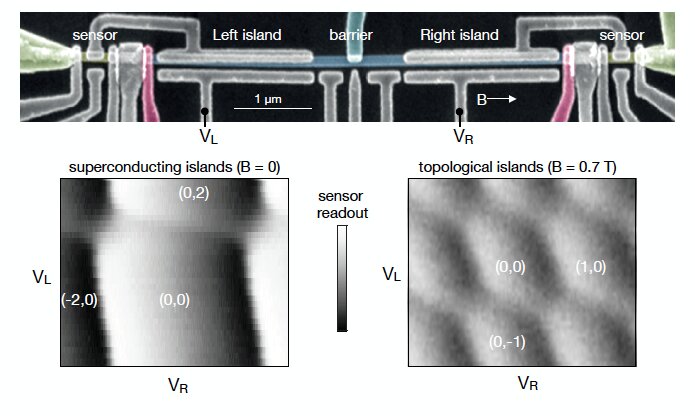
Researchers at the University of Copenhagen and Microsoft Quantum Lab Copenhagen have recently carried out a study investigating the potential of Majorana zero modes, zero-energy quasiparticle states that can be found in superconductive hybrid nanowires, as a means of protecting quantum data.
The study outlines the observation of photon-assisted tunneling signatures in a Majorana nanowire, offering interesting new insight that could pave the way towards better understanding these quasiparticle states.
At a physical level, Majorana zero modes conceal specific information, more precisely whether an excess electron is nonlocally present or absent inside a given topological superconductor. This information cannot be unveiled using tools for the collection of local measurements.
Theoretically, using Majorana zero modes to protect quantum data should thus be rather simple and straight-forward. However, this has so far proved very difficult to realize, as it requires substantial efforts, including the development of methods to read out zero-energy states and the design of hybrid materials that can reach these states in the first place.
Photon-assisted tunnelling is a technique that can be used to ‘connect’ quantum states of unequal total energy, using a photon with an energy matching the difference. The total energy of the quantum states in this experiment depend on the presence of an excess electron at discrete zero-energy states.
As the photon’s frequency is energy that can be controlled, the scientists could infer the energy difference between the quantum states and ultimately convert this into a coupling strength.
The method used by the researchers is quite simple. It entails measuring the average charge occupation of a double-island structure that hosts Majorana zero modes, while simultaneously applying a microwave tone to a nearly metallic structure coupled predominantly to one of the structure’s islands. (Phys.org)
The paper has been published in Nature Physics.
